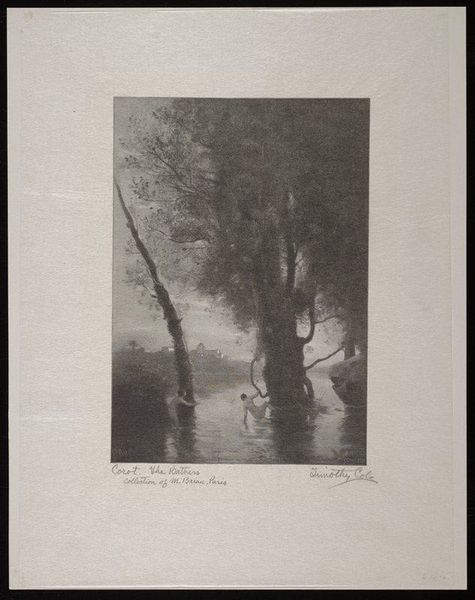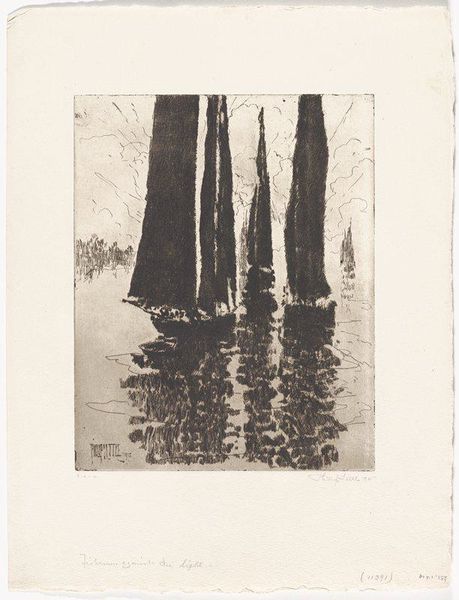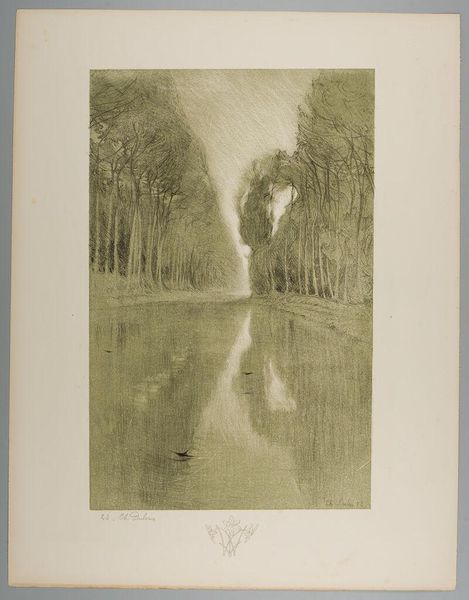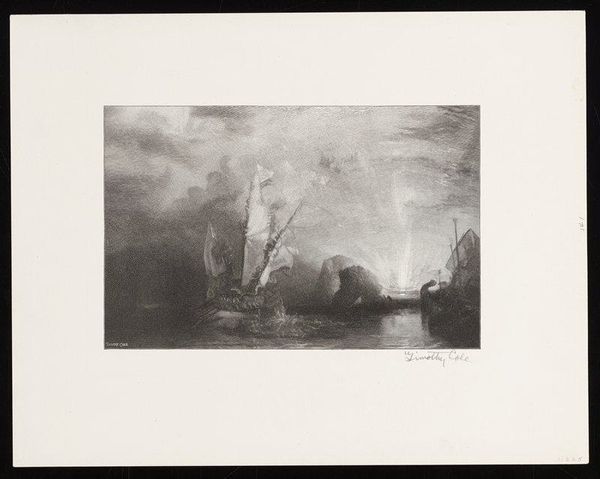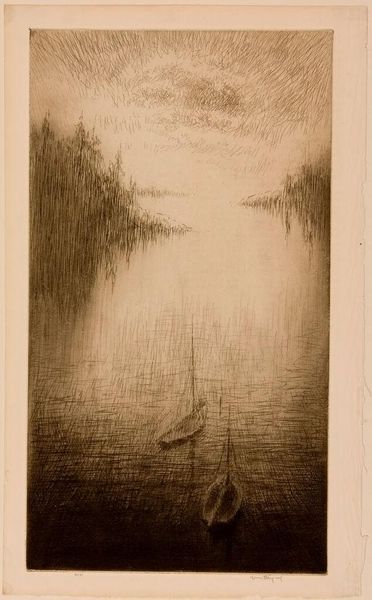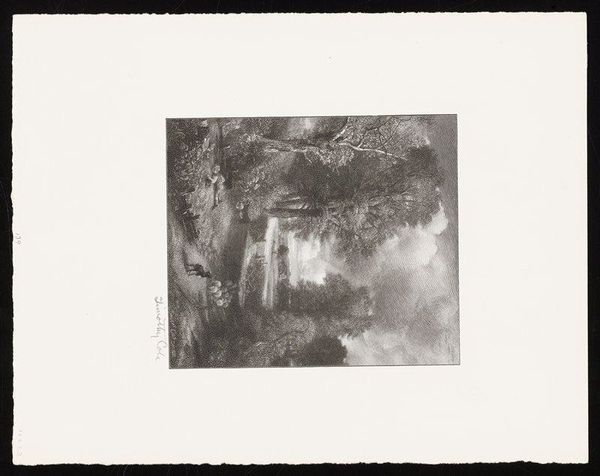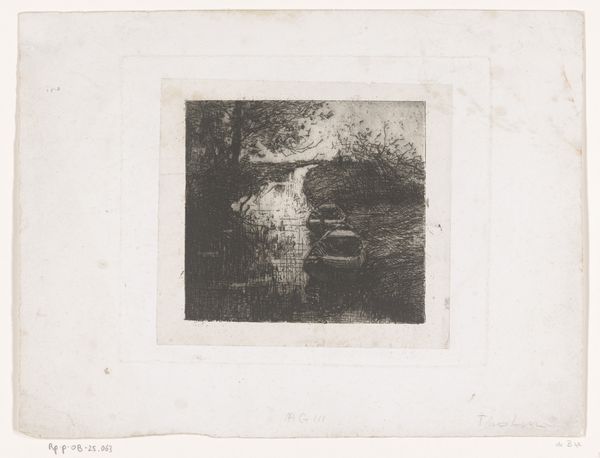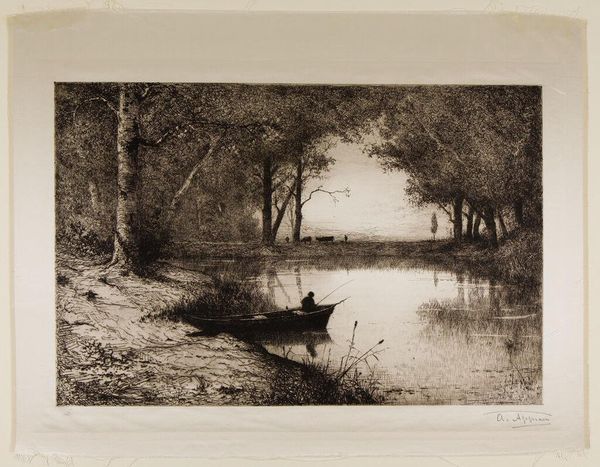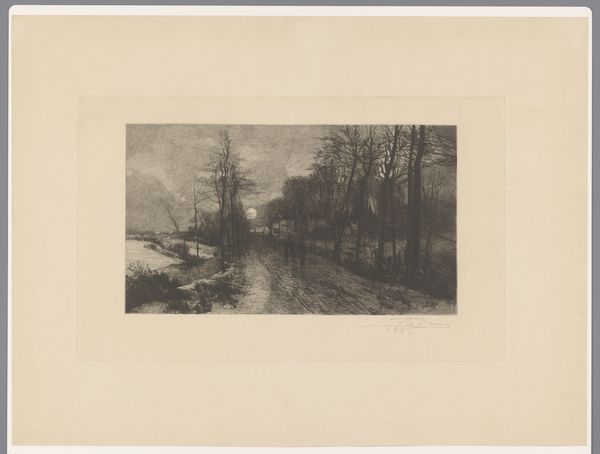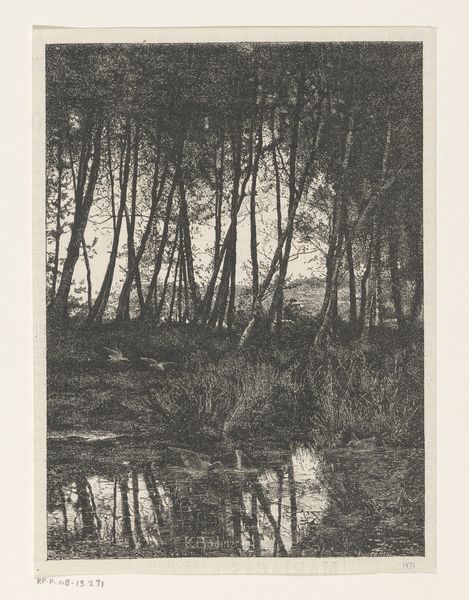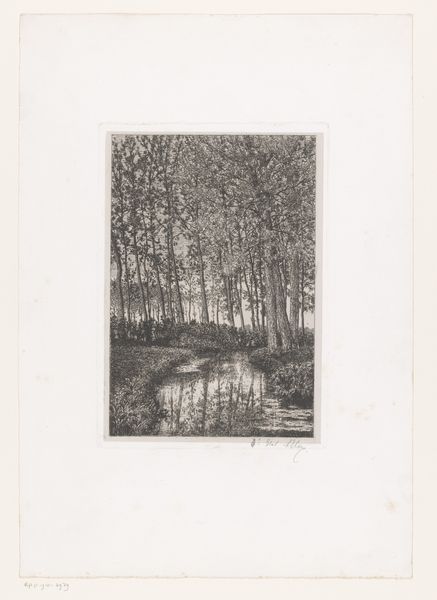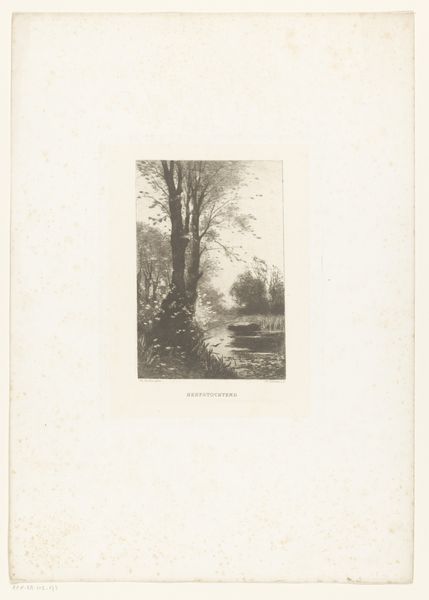
Dimensions: 7 5/8 x 5 5/16 in. (19.37 x 13.49 cm) (image)12 x 9 1/2 in. (30.48 x 24.13 cm) (sheet)
Copyright: No Copyright - United States
Curator: Here we have Timothy Cole's wood engraving, "The Bathers," created around 1910, based on a painting by Corot. Editor: The monochrome palette really lends a dreamlike quality to the scene, doesn't it? The dark, looming trees and the figures partially submerged in water... it feels quite ethereal, almost like a memory. Curator: Cole was a master of his craft. He was particularly renowned for his ability to translate the textures and light of paintings into the demanding medium of wood engraving. He’s evoking that very sentiment you observed through meticulously carved lines. Editor: I notice the women don't seem to acknowledge one another; their gazes are averted. To me, that subtle distance underscores the painting's themes of solitude and perhaps the artist's interpretation of societal constraints of the period. Curator: Bathers are quite ubiquitous within art history, aren't they? From classical sculptures to Impressionist paintings. I find that Cole is using them almost as archetypes. It’s hard to pinpoint the historical setting – they seem timeless, stripped down to just the pure essence of being. Editor: I find it more nuanced than that. Yes, the idyllic scene evokes classical paintings of nymphs, but their apparent lack of awareness suggests they're occupying an imposed space, which perhaps echoes societal norms. It’s hard to miss their potential self-isolation given their gendered positions. Curator: It’s that exact duality that I find so compelling! Are they liberated in nature, or restricted despite it? It reminds me of depictions of the Fall with innocence before consciousness, yet it is shaded with self-awareness and the burden of civilization. Editor: Cole, in his clever rendition of the composition, emphasizes both the freedom and burden experienced by those women who inhabit the image. Thank you for shedding new light to such an alluring wood engraving! Curator: Of course. Art acts as a wonderful conduit, reflecting not just what we see, but how our perspectives shape the stories we tell about what we see.
Comments
No comments
Be the first to comment and join the conversation on the ultimate creative platform.
